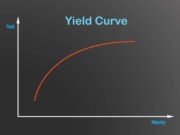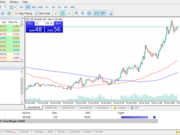Definition
The debt-to-equity ratio is a financial ratio indicating the relative proportion of shareholders’ equity and debt used to finance a company’s assets. Closely related to leveraging, the ratio is also known as risk, gearing or leverage. The two components are often taken from the firm’s balance sheet or statement of financial position, but the ratio may also be calculated using market values for both, if the company’s debt and equity are publicly traded, or using a combination of book value for debt and market value for equity financially.
Debt to Equity Ratio
This is a commonly used debt ratio by lenders (financial institutions). The debt to equity ratio is used to gauge the financial leverage of a company. A firm’s financial leverage basically shows the amount of debt that an organization uses to finance its investment in assets. This is relative to the sum of value that is represented in the shareholder’s equity.
Debt to Equity Ratio Formula
The ratio is computed by dividing the firm’s total liabilities with the firm’s stockholder equity. Below is the formula used to compute debt to equity ratio:
Debt to Equity Ratio = Total Liabilities / Shareholders’ Equity
The result can be expressed in two forms, numbers and percentages. It can easily be applied to corporate financial statements and personal financial statements. However, in the case of personal financial statements, the ratio is slightly tweaked and referred to as personal debt to equity ratio, where the shareholder’s equity is changed to [Total assets – Total Liabilities]. This is represented as:
Debt to Equity Ratio = Total Liabilities / [Total Assets – Total Liabilities]
Interpretation of Debt to Equity Ratio
The debt to equity ratio can be interpreted as the following:
- A high debt to equity ratio shows that the firm has been financing its growth aggressively with debt. And such financing shows that the company is risky and may have volatile earnings because of its interest expense.
- A low debt to equity ratio shows that the firm is less risky.
Let’s take a look at an example to understand debt to equity ratio better:
Suppose that two business owners, Henry and Jacob go to the bank for business loans. The bank’s loan officer first looks at their company’s balance sheets. Henry has $130,000 in assets and $100,000 in liabilities. This makes Henry’s equity $30,000. The bank’s loan officer devises debt to equity ratio by dividing Henry’s total liabilities by equity. The ratio result is 3. This shows that Henry will have every 3 dollar of debt for every 1 dollar of equity. In other words, it means that Henry’s firm is highly leveraged, making him a high risk for the bank. Therefore, his application is declined by the bank.
On the other hand, Jacob’s balance sheet is much stronger than Henry’s. Jacob has assets worth $160,000 and only $60,000 in liabilities. This makes his equity $100,000. The ratio result is 0.6. This means Jacob has 60 cents of debt for every dollar of equity. Hence, his low debt to equity ratio makes him a low risk for the bank and so his application for the loan is approved.
Though debt to equity is a powerful metric to identify high risk companies, it should never be used in isolation as no single ratio can tell the whole story. To evaluate a stock, many other metrics should be used in combination with debt to equity ratio for better decision making.
Further Reading
- The development of debt to equity ratio in capital structure model: A case of micro franchising – www.sciencedirect.com [PDF]
- The evolution of debt and equity markets in economic development – link.springer.com [PDF]
- Do sales–price and debt–equity explain stock returns better than book–market and firm size? – www.tandfonline.com [PDF]
- The impact of cash flow volatility on discretionary investment and the costs of debt and equity financing – www.sciencedirect.com [PDF]


































